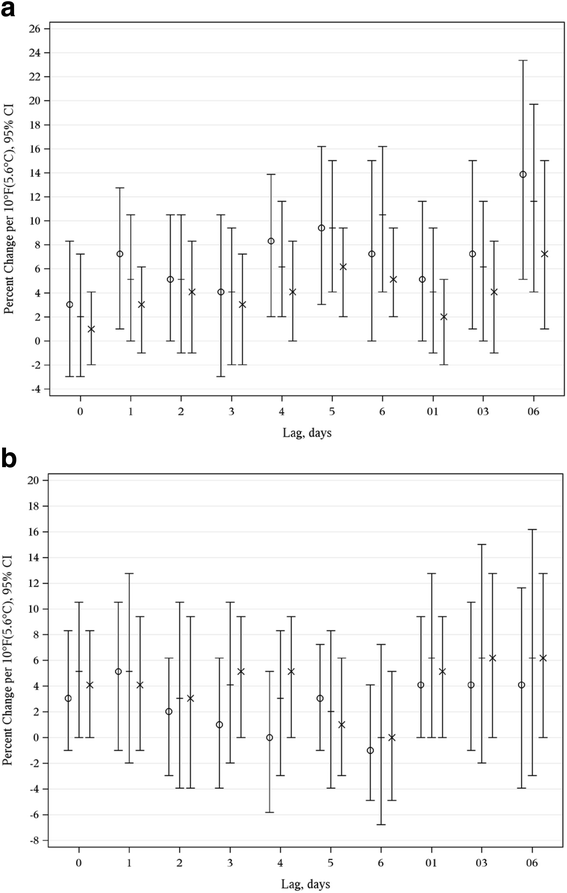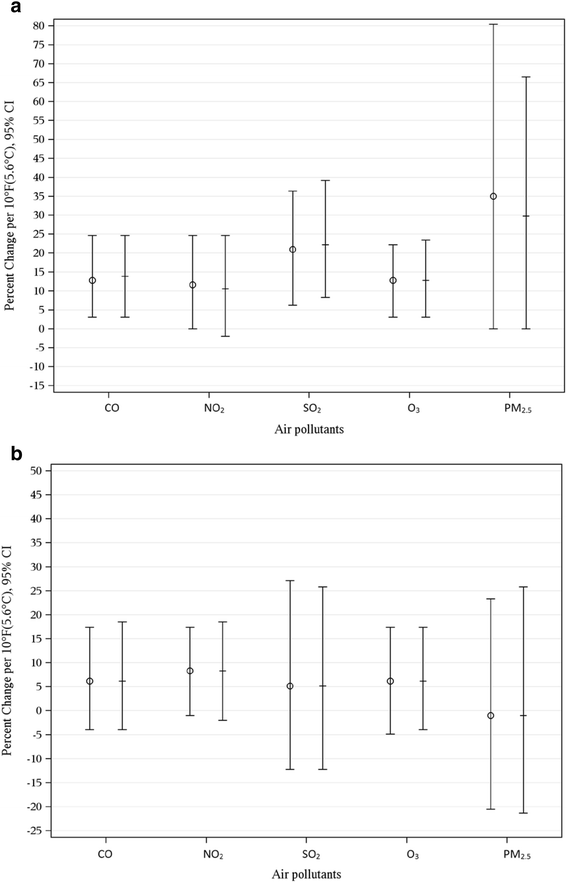The impact of high apparent temperature on spontaneous preterm delivery: a case-crossover study
- PMID: 28143601
- PMCID: PMC5286689
- DOI: 10.1186/s12940-017-0209-5
The impact of high apparent temperature on spontaneous preterm delivery: a case-crossover study
Abstract
Background: Despite the prediction that temperatures are expected to increase in the future, little is known about the health effects of increasing temperatures on pregnant women. The objective of this study was to investigate the impact of apparent temperature on spontaneous preterm delivery (PTD).
Methods: A case-crossover study of 14,466 singleton spontaneous preterm deliveries occurring between January 1, 1995 and December 31, 2009 among Kaiser Permanente Northern California (KPNC) members was conducted. Preterm deliveries were identified through KPNC's Electronic Health Records (EHR) data. Data on gestational age at delivery, infant sex, and maternal address were also extracted from KPNC's EHR and linked to meteorologic and air pollution monitoring data based on residential zip code.
Results: An 11.6% (95% CI: 4.1, 19.7) increase in spontaneous PTD was associated with a 10 °F (5.6 °C) increase in weekly average (lag06) apparent temperature, during the warm season. During the cold season, increases in apparent temperature did not significantly impact the overall effect of spontaneous PTD (6.2%, (95% CI: -3.0, 16.2) per 10 °F (5.6 °C) increase in weekly average (lag06) apparent temperature). Significant differences in the relationship between apparent temperature and spontaneous PTD emerged for region, gestational age and infant sex, during the cold season. No significant differences emerged for air pollutants.
Conclusions: Our findings provide evidence for an increase in the odds of spontaneous PTD associated with increases in apparent temperature, especially during the warm season.
Keywords: California; Case-crossover; Epidemiology; Heat; Spontaneous preterm birth.
Figures




References
-
- Berkowitz GS, Papiernik E. Epidemiology of preterm birth. Epidemiol Rev. 1993;15(2):414–43. - PubMed
Publication types
MeSH terms
Grants and funding
LinkOut - more resources
Full Text Sources
Other Literature Sources

